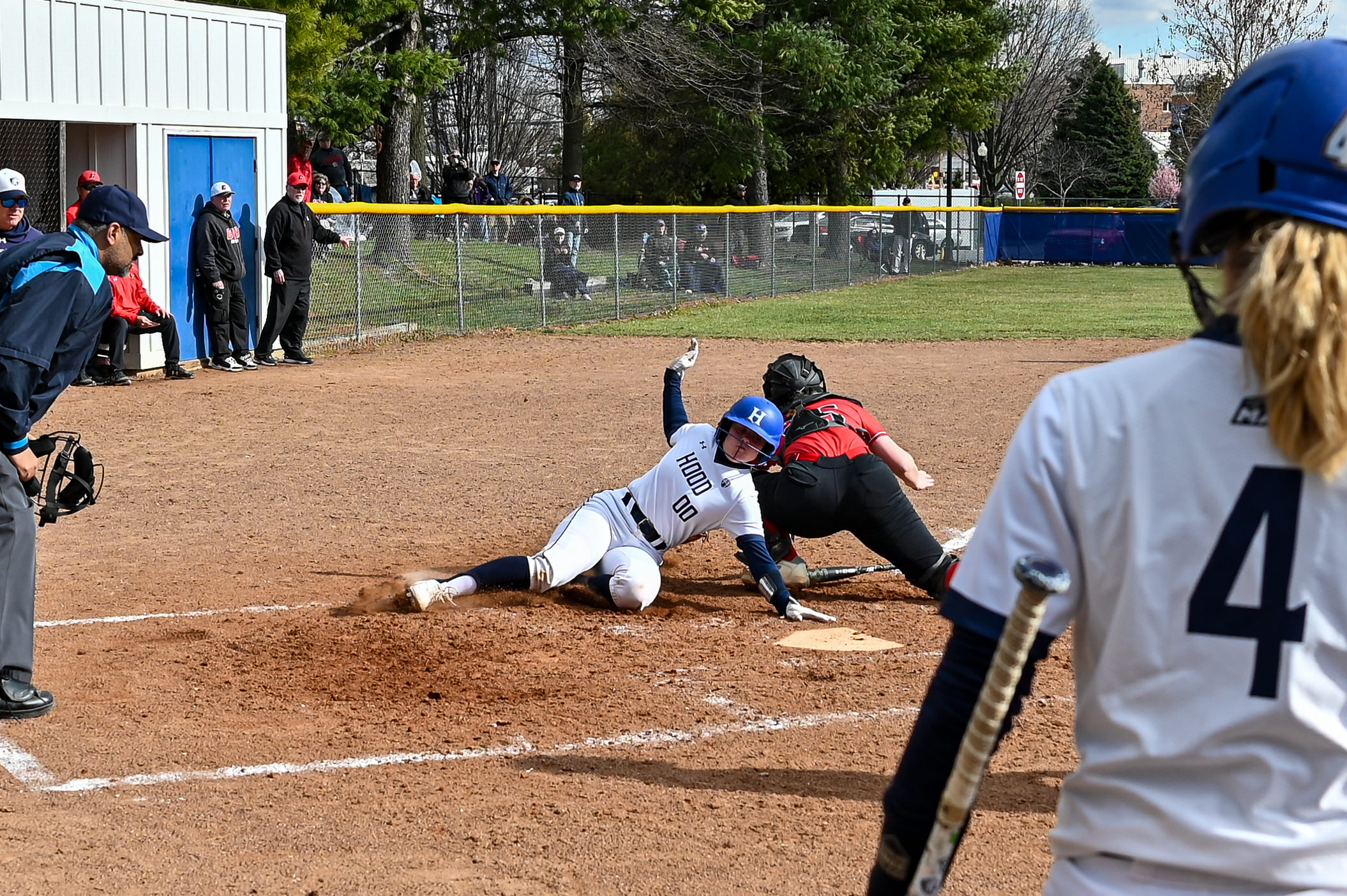Contributing Writer John Curran
Why doesn’t Hood College have a football team? Many have asked this question. I should warn you that I did not expect the topic to be so complex. After all, I knew nothing about football. My first interview was with Tom Dickman, Hood College Athletic Director. As I was walking down the long isolated hallway to get to the interview, I thought, “what have I gotten myself into?”
In 2014, the board of trustees requested that a feasibility study be done to see whether or not Hood College should establish a football team. A committee was setup to facilitate the study and manage the research process. The committee was chaired by Dr. Olivia White, Dean of Students. “The rationale behind the board’s decision was to increase enrollment and to draw interest to the college within the Frederick Community,” said Chuck Mann, Vice President of Finance and Treasurer. College enrollment among high school graduates has been down nationwide.
The feasibility study was never completed. The board of trustees along with President Andrea Chapdelaine, decided to put the
study on hold indefinitely when Chapdelaine became president. “President Chapdelaine put the study on hold, because she thought there were more pressing issues,” said Dickman. When I asked Tom Dickman if he was a proponent of a football team, he never answered the question. He went straight into the history of the football team discussion.
If you are interested in what these pressing issues were, you are not alone. I went into my interview with Chuck Mann wondering what were these concerning issues? So I asked. “The most important issue was that it was unfair to President Chapdelaine to have to deal with such a controversial debate in the first months of her presidency,” said Mann. The feasibility study was going to be presented to the board of trustees in October 2015. President Chapdelaine didn’t start until July 2015.
Included in the feasibility study was a survey. The survey was given to current students, faculty and staff, as well as alumni. “The results of the study showed that the majority of respondents had a negative opinion on whether the college should establish a football team,” said Mann.
“One of the major concerns expressed in the comment section of the survey was that Hood’s academic quality would diminish.” However, Georgetown is a Division III school; they have a football team, and their academic rank has not been affected.
When Hood was considering the idea of a football team, they looked at other schools within Division III. A school that they had particular interest in was Stevenson University. Stevenson was also experiencing low college enrollment and had established a football team in 2011. “They have had really good results,” said Mann.
While Hood never reached the point of conducting a cost/benefit analysis, expenses were an obvious factor. “One of the major problems we would have to face is that we are land locked,” said Dickman. Therefore, in order to even build a stadium, we would have to buy land away from the campus. Other expenses would include equipment, a locker room that would house at least 160 players, and a practice field.
A desire to increase enrollment was the basis of the board’s decision. “When you have a football team you need to have at least 100 players,” said Dickman. Enrollment would increase through the recruitment of players and the creation of a marching band. According to Dickman, with an enrollment increase would come the expense of building more dorms.
The college also considered a football program as a way to engage the Frederick community. “Football is more than just a sport, it has become such a part of American culture,” said Mann. Many people watch football games for the social aspect. The football season would increase social life on campus. The college saw a football program as a way to bring alumni back to campus. “Schools with a football team often have a more engaged alumni, “said Dickman. “If you think about it, many homecomings are centered around a football game.”
Those opposed to a football program argue that there have been other programs put in place to increase enrollment. Hood has established two new Masters programs, a doctoral program in organizational leadership, and added several new majors. “The college is like any other business, it has to keep evolving,” said Mann. “If you aren’t evolving than you will constantly be behind.”
With growing concern over concussions and the negative effects it has on the brain, would it be worth it for Hood to invest millions of dollars into creating a program that could harm the health of its students? “If we decide not to set up a football team we won’t be preventing students from getting concussions because potential players will go to other schools; however, that doesn’t mean we have to have blood on our hands,” said Mann. Mann was originally supportive of a football team until he watched the movie “Concussion”. “The movie was eye- opening,” said Mann.
With the school’s strategic plan coming to an end this June, the board of trustees along with the college’s administration is in the process of drafting a new 10-year strategic plan. The new strategic plan will be approved in June. “If there is wording in the plan to the effect of increasing enrollment through sports, then maybe we will revisit the feasibility study,” said Mann. “If the wording is not in place, then there is no need.”
Will there ever be a football team at Hood? Stay tuned




Be the first to comment